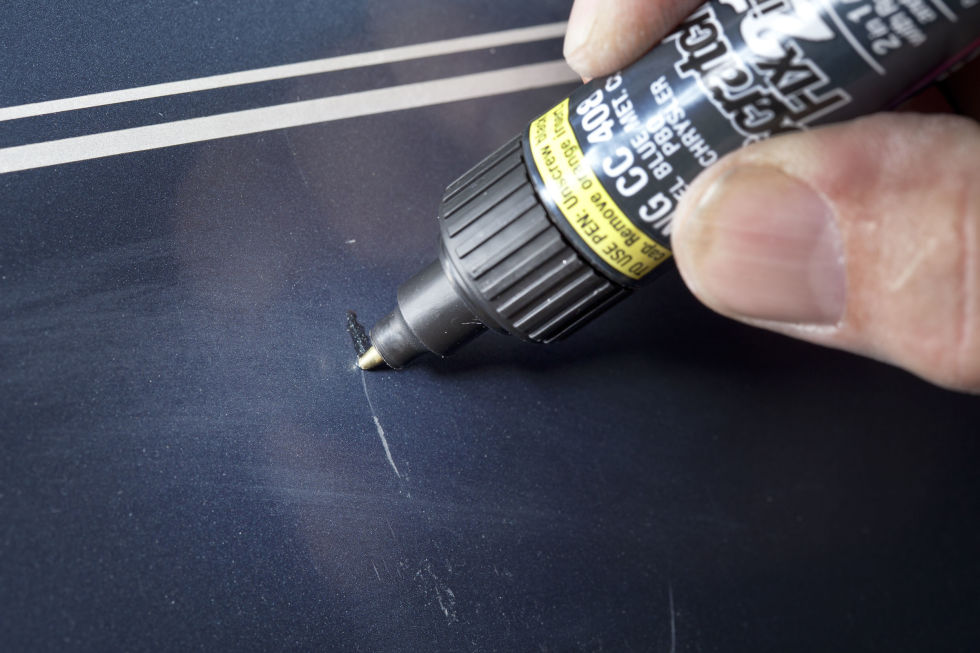Eliminating Nicks & Scratches

Begin this project by getting the proper paint color. Car dealerships usually sell 1/2-oz. vials of touch-up paint and clear coat for around $8 each. But call the parts department to see if the color you need is in stock (have your VIN handy). One vial is enough to repair arounda couple dozen small paint chips. Many auto parts sites can tell you how to find your vehicle’s paint code. Expect to pay $20 to $30 for a 2-oz. paint bottle.
More Tools and Supplies to Get
To fix scratches and paint chips, you willneed a spot-sanding tool (around $8), professional micro applicators and paint syringes ($7 to $9 each). The applicators deliver just the right amount of paint to chips. For scratches, use the paint syringes to put on a continuous coat of paint. For small dings and dents, apply paint with a 1/4-in. artist’s brush ($10 at an art supply store).
At an auto parts store, buy a can of wax and grease remover (about 4 bucks), and if you already have rust forming, different types of sandpaper grits (150- and 600-grit, respectively) and one bottle of brush-on rust converter ($7).
The Process
Before beginning any of these repairs, wash your vehicle—this is super important, according to the Service Manager at www.patrickautobody.com, which is based out of Schaumburg and Naperville, IL. Let the car dry and apply the wax and grease remover with a clean rag to the areas you are touching up.
If you’ve got flaking paint with exposed rust (which means the next couple of paragraphs don’t apply to you if you don’t have rust), pick away your loose paint with a putty knife or small screwdriver. Then sand off surface rust with the 150-grit sandpaper. Switch to 600-grit sandpaper to feather painted edges around the spot. Use the spot-sanding tool to take off rust from scratches and large paint chips. Remove the sanding dust with a clean rag. Then follow the instructions on the rust converter’s bottle and use a foam brush to apply a thin coating to the area.
For scratches, use a paint syringe to put on the converter. Allow it to dry thoroughly. Most rust converters dry to form a primer coat and do not require additional primer, but double check the directions.
Shake the paint vial or stir the bottle for the recommended time to make sure that the metallic flakes are suspended in your paint. For dents, use the artist’s brush to put on a light coat of paint to the treated area. Make use of several thin coats rather than a single thick one. Lightly sand each coat with 600-grit sandpaper after it’s dried. Clean your brush with the recommended solvent in between coats.
To repair paint chips, select a micro applicator that’s smaller than the chip. Now, apply several thin coats, rather than a paint blob.
To repair scratches, apply your brush head to the syringe and load it with a tiny amount of paint. Then apply light pressure to the plunger as you guide the brush head along your vehicle’s scratch.





